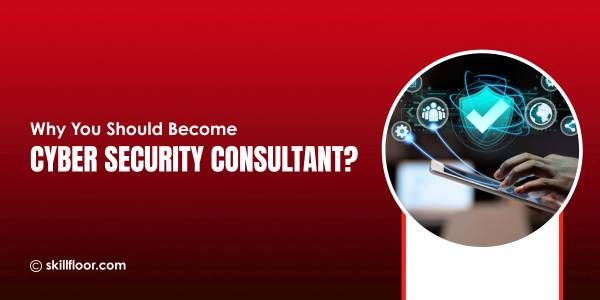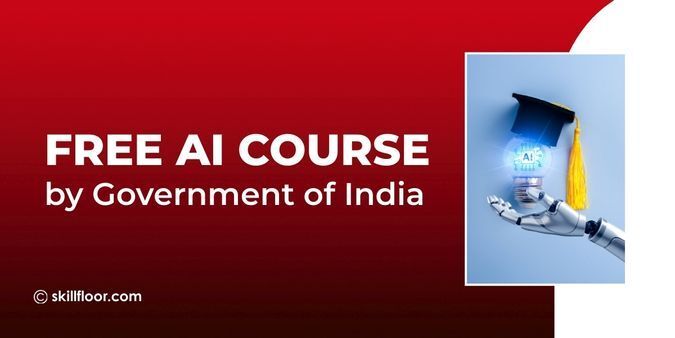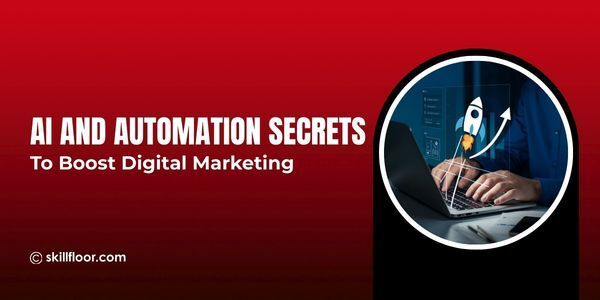The Human Side of Data Analytics
Explore the human side of data analytics. Learn how people, skills, and ethics intersect with data analysis in this insightful journey.

In the digital age, data analytics has emerged as a powerful tool that drives decision-making across various industries. From predicting consumer behavior to optimizing supply chains, data analytics has proven its worth in providing insights that can transform businesses. However, in the midst of all the numbers, algorithms, and graphs, it's crucial not to lose sight of the human side of data analytics. Beyond the technical aspects lies a profound connection between data and the people who interpret, analyze, and act upon it. This blog delves into the significance of the human touch in data analytics and explores how a balance between technology and human insight can drive success.
Technology and Human Insight
In the realm of data analytics, the symbiotic relationship between technology and human insight forms the cornerstone of successful and meaningful analysis. While advanced algorithms and computational tools have revolutionized how data is processed and analyzed, it is the human touch that brings depth, context, and understanding to the data-driven decision-making process. The marriage of technology and human insight in data analytics represents the harmonious interplay between the capabilities of machines and the unique cognitive abilities of human analysts. Let's delve deeper into this crucial partnership:
-
Complementary Strengths: Technology excels at handling massive volumes of data, performing complex calculations, and identifying patterns that might be imperceptible to the human eye. However, it lacks the intuition, empathy, and critical thinking that humans possess. Human analysts are skilled at asking pertinent questions, contextualizing data within real-world scenarios, and recognizing the subtle nuances that automated processes might overlook.
-
Asking the Right Questions: Effective data analysis begins with asking the right questions. While machines can churn through data to provide answers, it's the human analysts who frame the inquiries that lead to valuable insights. Human insight is essential for identifying the underlying challenges, defining the scope of analysis, and formulating hypotheses that drive meaningful investigation.
-
Contextual Understanding: Data doesn't exist in a vacuum; it is rooted in real-world contexts. Human analysts have the ability to understand the broader business environment, industry trends, and cultural nuances that impact data interpretation. This contextual understanding is crucial for making informed decisions based on data insights that align with the organization's goals.
-
Creative Problem Solving: Data analysis often requires creative thinking and innovative problem-solving. Human analysts possess the cognitive flexibility to explore alternative approaches, devise new methodologies, and adapt existing techniques to address unique challenges. This creativity enables the exploration of unconventional avenues, potentially leading to breakthrough insights.
Human-Centric Problem Solving
Human-centric problem solving lies at the heart of effective data analytics. While data provides a wealth of information, it's the human analysts who bring context, empathy, and a deep understanding of the organizational landscape to the process. Rather than viewing data analysis as a detached exercise, human-centric problem solving emphasizes the need to connect the dots between data insights and real-world challenges. This approach involves not only understanding the technical aspects of data analysis but also appreciating the nuances of the business environment.
In human-centric problem solving, data analysts become more than just number crunchers; they become strategic thinkers who bridge the gap between data and actionable solutions. They immerse themselves in the business's goals, challenges, and market dynamics, ensuring that the insights they generate align with the organization's objectives. By doing so, these analysts transform raw data into a strategic compass, guiding decision-makers toward informed choices.
Furthermore, this approach recognizes the importance of collaboration. Effective problem solving often involves multiple stakeholders from different departments, each contributing unique perspectives. Human-centric problem solving encourages analysts to engage in conversations with colleagues, leveraging their diverse knowledge to uncover deeper insights. By embracing this collaborative spirit, analysts can identify connections and opportunities that might not have been apparent through data analysis alone.
Ethics and Responsibility
-
Data Privacy and Consent: Ensuring that data is collected and used with proper consent and in compliance with privacy regulations to protect individuals' rights and prevent unauthorized access.
-
Fairness and Bias: Identifying and mitigating biases in data and algorithms to ensure equitable treatment and prevent discrimination based on factors like gender, race, or socioeconomic status.
-
Transparency: Being open about data collection, analysis methods, and decision-making processes to build trust and allow stakeholders to understand how conclusions are drawn.
-
Accountability: Taking responsibility for the outcomes of data-driven decisions and actions, including acknowledging and rectifying any negative impacts that may arise.
-
Data Security: Safeguarding data from breaches, hacks, and unauthorized use to prevent potential harm to individuals and organizations.
-
Social and Environmental Impact: Considering the broader implications of data analytics on society and the environment, and making choices that promote positive outcomes.
-
Avoiding Manipulation: Using data ethically and responsibly, avoiding practices that manipulate or deceive individuals or influence decisions against their best interests.
Communication and Storytelling
Effective communication and storytelling are essential components of successful data analytics. While data itself may be complex and abstract, the ability to convey its meaning and implications to a wider audience is crucial for driving decision-making, inspiring action, and achieving organizational goals. Here's a closer look at why communication and storytelling matter in the context of data analytics:
-
Translating Complexity into Clarity:
Data analytics often involves intricate statistical analyses, algorithms, and technical jargon that can be overwhelming to non-technical stakeholders. Skilled communicators bridge this gap by simplifying complex concepts, using relatable metaphors, and breaking down information into digestible pieces. By doing so, they enable decision-makers to grasp the insights and make informed choices.
-
Engaging Stakeholders:
In order to drive change based on data insights, you need to engage and inspire stakeholders. Effective communication paints a vivid picture of the problem, opportunity, or challenge at hand. Storytelling techniques, such as sharing real-life examples or case studies, can captivate your audience and help them emotionally connect with the data. This engagement increases the likelihood of buy-in and support for data-driven initiatives.
-
Creating a Narrative:
Data itself might seem disconnected, but weaving it into a compelling narrative gives it context and purpose. Storytelling involves identifying the key takeaways, structuring the information in a logical sequence, and highlighting the cause-and-effect relationships within the data. By crafting a coherent narrative, you guide your audience through the data journey and help them understand the significance of your findings.
-
Fostering Understanding:
Numbers and charts alone may not resonate with everyone. Through effective communication and storytelling, you transform data into relatable stories that people can understand and remember. Visual aids, analogies, and relatable examples bridge the gap between technical experts and those less familiar with data analysis, ensuring that everyone is on the same page.
Adaptability and Continuous Learning
In the rapidly evolving world of data analytics, one of the most critical attributes for success is adaptability coupled with a commitment to continuous learning. As technology advances, new methodologies emerge, and industries transform, professionals in the data analytics field must embrace a mindset of adaptability to remain relevant and effective. This article explores the significance of adaptability and continuous learning in the context of data analytics and highlights how these qualities contribute to individual growth and overall industry advancement.
Adaptability: Thriving in Change
Adaptability refers to the ability to adjust, modify, or transform one's approach in response to changing circumstances. In the context of data analytics, it's about being agile enough to respond to shifts in technology, business needs, and market trends. Here's why adaptability matters:
-
Technological Evolution: The field of data analytics is in a constant state of innovation. New tools, platforms, and algorithms are developed regularly. Professionals who can quickly learn and integrate these advancements into their work can generate better insights and outcomes.
-
Changing Business Landscape: Businesses continually evolve to meet consumer demands and market conditions. Data analysts who can adapt to these changes by understanding the evolving business priorities can provide insights that directly impact decision-making.
-
Flexibility in Methodology: Not all data challenges can be solved using a one-size-fits-all approach. Adaptability allows analysts to choose the most suitable methodologies for different scenarios, improving the accuracy and relevance of the results.
Continuous Learning: Fueling Professional Growth
Continuous learning is a mindset that involves actively seeking out new knowledge, skills, and experiences to remain at the forefront of one's field. In data analytics, this means staying informed about emerging trends, best practices, and novel techniques. Here's why continuous learning is vital:
-
Staying Relevant: The world of data analytics is highly competitive, and what's considered cutting-edge today might become outdated tomorrow. Continuous learning ensures that professionals remain relevant and valued in an ever-changing landscape.
-
Broadening Skill Sets: Data analytics is multidisciplinary, requiring expertise in statistics, programming, data visualization, and domain-specific knowledge. By embracing continuous learning, analysts can expand their skill sets and become more versatile problem-solvers.
-
Innovative Problem Solving: Exposure to new concepts and methodologies through learning enables data analysts to approach challenges from fresh perspectives. This can lead to more innovative and effective solutions.
The Synergy between Adaptability and Continuous Learning
Adaptability and continuous learning go hand in hand. Here's how they reinforce each other
-
Feedback Loop: Adaptability allows data analysts to recognize gaps in their knowledge or skills. Continuous learning addresses these gaps, enabling professionals to effectively adapt to new challenges.
-
Embracing Change: A commitment to continuous learning fosters a mindset that embraces change rather than shying away from it. This attitude is crucial for adapting to the ever-changing landscape of data analytics.
-
Resilience: The synergy between adaptability and continuous learning cultivates resilience. Professionals who continuously seek knowledge are better equipped to navigate setbacks and challenges, emerging stronger and more informed.
Data analytics isn't solely about numbers, charts, and algorithms—it's about people. The human side of data analytics encompasses the ability to ask the right questions, make ethical decisions, communicate effectively, and adapt to change. This human touch adds depth and context to data, turning it into actionable insights that drive organizational growth and innovation. As technology advances, it's important to remember that while machines process data, it's the human analysts who give it meaning and purpose. By embracing the human side of data analytics, we can truly harness the transformative power of data for the betterment of businesses and society as a whole.




























































